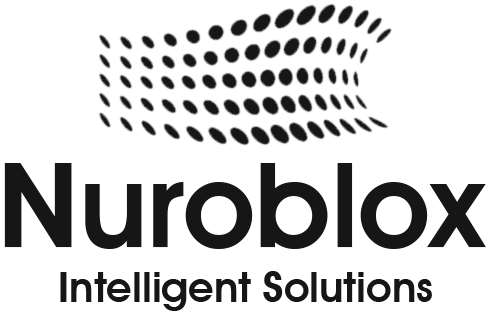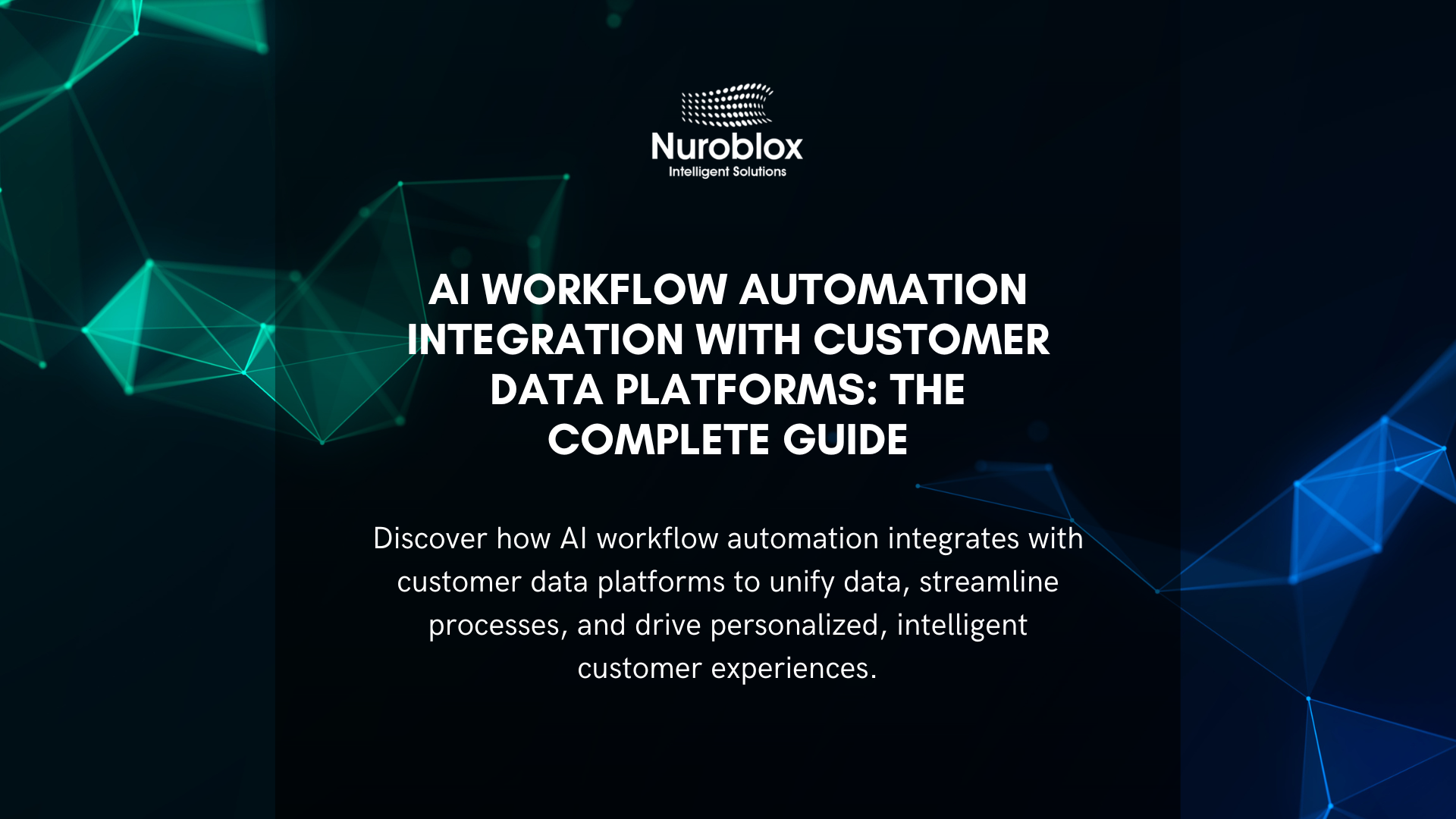AI Workflow Automation Integration with Customer Data Platforms: The Complete Guide
Customer data platforms (CDPs) have become the backbone of modern customer experience strategies, but managing the massive influx of customer data requires more than storage – it demands intelligent automation. AI workflow automation integration with customer data platforms is revolutionizing how businesses collect, process, and activate customer data, enabling real-time personalization at scale while reducing manual workload by up to 80%.
This comprehensive guide explores how integrating AI workflow automation with your CDP can transform your customer engagement strategy, streamline operations, and deliver measurable business results.
Understanding AI Workflow Automation and Customer Data Platforms
AI workflow automation represents the convergence of artificial intelligence, machine learning, and process automation to create self-optimizing business workflows that adapt to changing conditions. When integrated with customer data platforms, these intelligent systems can automatically collect, cleanse, segment, and activate customer data across multiple channels without human intervention.
Customer data platforms serve as centralized hubs that unify customer information from various touchpoints like websites, mobile apps, CRM systems, email platforms, and social media. By adding AI workflow automation capabilities, CDPs transform from passive data repositories into active intelligence engines that continuously analyze patterns, predict behaviors, and trigger personalized customer interactions.
The integration creates a powerful ecosystem where data flows seamlessly between systems, insights are generated automatically, and marketing campaigns adapt in real-time based on customer behavior. Organizations implementing this integration report 45% faster time-to-market for campaigns and 60% improvement in customer engagement metrics.
Key Benefits of Integrating AI Workflow Automation with CDPs
Real-Time Data Processing and Activation
Traditional CDP implementations often struggle with data latency, processing customer information in batches that can be hours or days old. AI workflow automation enables real-time data ingestion, transformation, and activation, ensuring that customer profiles are always current. This immediacy allows businesses to respond to customer actions within milliseconds, triggering personalized offers, content recommendations, or support interventions at the perfect moment.
Automated workflows continuously monitor data streams from all connected sources, identifying significant events such as cart abandonments, support tickets, or engagement spikes and instantly routing this information to the appropriate systems for action. Financial services companies using real-time CDP automation have reduced fraud detection times from hours to seconds, preventing millions in potential losses.
Enhanced Data Quality and Governance
Data quality issues plague 87% of organizations, leading to poor decision-making and wasted marketing spend. AI-powered workflow automation addresses this challenge by implementing intelligent data cleansing, validation, and enrichment processes that run continuously. Machine learning algorithms detect anomalies, identify duplicates, standardize formats, and fill missing information by cross-referencing multiple data sources.
Automated governance workflows ensure compliance with data privacy regulations like GDPR and CCPA by tracking consent preferences, managing data retention policies, and automatically anonymizing or deleting information when required. These systems maintain detailed audit trails of all data access and modifications, providing transparency for regulatory compliance without manual documentation.
Predictive Customer Intelligence
The combination of CDP data richness and AI analytical power unlocks predictive capabilities that were previously impossible. Automated machine learning models analyze historical customer behavior patterns to forecast future actions like identifying customers likely to churn, predicting lifetime value, or determining optimal engagement timing.
These predictive insights automatically feed into segmentation workflows, creating dynamic customer groups that update in real-time as behaviors change. Marketing teams can target high-propensity segments with personalized campaigns while automated workflows nurture lower-engagement customers with retention strategies, all without manual intervention.
Omnichannel Orchestration at Scale
Modern customers interact with brands across an average of nine different channels, expecting consistent, personalized experiences everywhere. AI workflow automation enables true omnichannel orchestration by coordinating customer interactions across all touchpoints based on centralized CDP data.
Intelligent workflows determine the optimal channel, message, and timing for each customer interaction, learning from response patterns to continuously improve performance. If a customer doesn’t engage with an email, the system automatically adjusts the strategy, perhaps trying a push notification or SMS instead while ensuring message consistency and avoiding communication fatigue.
Essential Integration Capabilities for CDP Automation
Intelligent Data Mapping and Transformation
Successful AI workflow automation integration requires sophisticated data mapping capabilities that connect CDP schemas with source systems and activation channels. Modern integration platforms use AI to automatically suggest field mappings, identify relationships between data elements, and transform formats without custom coding.
These systems handle complex data transformations like converting currencies, normalizing addresses, calculating derived attributes, and resolving identity conflicts through configurable workflow rules. When new data sources are added, machine learning algorithms analyze the structure and content to recommend optimal integration patterns, reducing implementation time from weeks to hours.
Event-Driven Automation Architecture
The most powerful CDP integrations operate on event-driven architectures where customer actions trigger immediate automated responses. AI workflow systems monitor the CDP for significant events like purchases, support interactions, website visits, or preference changes and execute predefined workflows that span multiple systems.
For example, when a high-value customer submits a negative review, automated workflows can simultaneously create a support ticket, alert the account manager, suppress promotional communications, and trigger a retention offer all within seconds. This event-driven approach ensures that no important customer signal goes unnoticed or unaddressed.
AI-Powered Decision Engines
Advanced CDP integrations incorporate decision engines that use machine learning to determine optimal actions for each customer scenario. Rather than following rigid rule-based logic, these systems evaluate multiple variables like customer history, current context, business objectives, channel availability to select the best course of action.
Decision engines continuously learn from outcomes, automatically adjusting their logic to improve performance. They can run A/B tests across thousands of variations, identify winning strategies, and scale successful patterns across the customer base without manual analysis.
Implementation Best Practices for CDP Integration
Start with High-Impact Use Cases
Organizations should begin their AI workflow automation integration by identifying high-impact use cases that deliver immediate value. Common starting points include abandoned cart recovery, welcome series automation, post-purchase engagement, and customer reactivation campaigns.
These use cases typically involve well-defined customer journeys, clear success metrics, and manageable complexity making them ideal for initial implementation. Early wins build organizational confidence and demonstrate ROI, securing support for more ambitious automation initiatives.
Establish Data Foundation First
Successful automation requires clean, well-structured data. Before implementing complex workflows, organizations should invest in data quality initiatives like standardizing schemas, resolving identity conflicts, enriching profiles, and establishing governance policies.
The CDP should serve as the single source of truth for customer information, with clearly defined data ownership, update frequencies, and access permissions. Automated data quality workflows should run continuously, flagging issues before they impact customer experiences.
Design for Scalability and Flexibility
AI workflow automation architectures should accommodate growth and change. Organizations should select platforms that support modular workflow design, allowing teams to build reusable components that can be combined in different ways.
Cloud-native solutions with elastic scaling capabilities ensure that workflows continue performing as data volumes and complexity increase. The architecture should also support easy integration with new data sources and activation channels as the martech stack evolves.
Implement Continuous Monitoring and Optimization
Automated workflows require ongoing monitoring to ensure they’re delivering expected results. Organizations should establish dashboards that track key performance indicators like workflow execution times, error rates, conversion metrics, and customer satisfaction scores.
AI-powered monitoring systems can automatically detect performance degradation, identify bottlenecks, and recommend optimizations. Regular review cycles should assess whether workflows still align with business objectives and customer expectations, making adjustments as needed.

Operational Efficiency Metrics
AI workflow automation integration should demonstrably reduce manual effort and accelerate processes. Key metrics include workflow automation rate (percentage of tasks completed without human intervention), processing time reduction, error rate decrease, and team productivity improvements.
Organizations typically achieve 60-80% reduction in manual data processing tasks within the first year of implementation. Customer data management teams can redirect this saved time toward strategic initiatives like audience strategy development and customer journey optimization.
Customer Experience Improvements
The ultimate measure of success lies in improved customer experiences and outcomes. Track metrics such as personalization effectiveness, engagement rates across channels, customer satisfaction scores, and Net Promoter Score (NPS) changes.
Businesses with mature CDP automation capabilities report 2-3x higher email engagement rates, 40% improvement in conversion rates, and 25% increase in customer lifetime value. Time-to-value for customer interactions should also decrease as automated workflows enable faster, more relevant responses.
Business Impact Metrics
Executive stakeholders need clear evidence of financial returns from technology investments. Calculate metrics such as marketing ROI improvement, revenue per customer increase, customer acquisition cost reduction, and overall revenue growth attributable to enhanced personalization.
Leading organizations document 15-25% revenue increases directly linked to AI-powered CDP automation within 18 months of implementation. Cost savings from reduced manual labor, improved marketing efficiency, and decreased technology complexity also contribute to overall ROI.
Transform Your Customer Data Strategy with Intelligent Automation
AI workflow automation integration with customer data platforms represents the future of customer engagement – combining the comprehensive data unification of CDPs with the intelligent processing power of AI to create personalized experiences at scale. Organizations that embrace this integration gain competitive advantages through faster response times, deeper customer insights, and more efficient operations.
The technology has matured to the point where implementation is accessible to businesses of all sizes, with cloud-based platforms offering flexible deployment options and pricing models. By starting with focused use cases, establishing strong data foundations, and continuously optimizing based on results, organizations can transform their customer data from a static resource into a dynamic engine for growth.
Ready to unlock the full potential of your customer data platform? Explore how Nuroblox’s AI workflow automation capabilities can integrate with your CDP to deliver intelligent, automated customer experiences that drive measurable business results.


